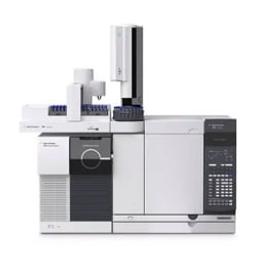GC/MS/MS Pesticides Analyzer
Based on the 7010B Triple Quadrupole GC/MS, Agilent’s Pesticides and Environmental Pollutants GC/MS/MS Analyzer 4.0 with the MassHunter Pesticide & Pollutant MRM Database provides the lowest possible detection and quantitation limits for pesticides residues in complex matrices.
Quality of GC-MS/MS
Pesticides determination
GC-MS/MS is high quality instrument for pesticides and also its expensive.
Review Date: 30 May 2025 | Agilent Technologies
Rugged equipment and Great support
Analysis of Pesticide residues
The software is very user friendly. Equipment comes with a database of above 1000 molecules. It is also easy to develop and optimize methods. Service support is excelled along with application support. Equipment is trouble free & results are highly reproducuble
Review Date: 24 Oct 2022 | Agilent Technologies
Superior instrument.
Environmental laboratory
Durable and accurate. Excellent sensitivity and easily networked to LIMS.
Review Date: 26 Mar 2019 | Agilent Technologies
Best one
Pesticide residues
I used it my lab and daily work for determination of pesticides residues.
Review Date: 26 Mar 2019 | Agilent Technologies
foodsience
Agilent has produced a reliable GC as always, the MS part is well done as well as easy linkage betweeen the two systems. The software is a little bit too complex, maybe some intensive training would help.
Review Date: 20 Aug 2012 | Agilent Technologies
pesticide
Good performace with MMI injector and backflush features. I run high fat food sample with modified QuEChERS method and has no column performace issue. Need to improve the data reporting particularly when you try to screen 200+ analyte and found only 1 or 2 pesticides over the LOQ to report. Need to improve the Qual software by adding name of analyte instead of Q1/Q3 mass so you can screen it faster. Check the Analyst software for LC/MS to understand what I mean.
Review Date: 10 Aug 2012 | Agilent Technologies
Concern over pesticides contamination increases the demand for trace level analysis of residual pollutants in food, beverage and environmental samples. Extracts from these matrices contain target residues plus a mixture of organic compounds co-extracted during sample preparation that increase the difficulty to accurately quantitate and confirm the presence of target compounds. Based on the 7010B Triple Quadrupole GC/MS, Agilent’s Pesticides and Environmental Pollutants GC/MS/MS Analyzer 4.0 with the MassHunter Pesticide & Pollutant MRM Database provides the lowest possible detection and quantitation limits for pesticides residues in complex matrices. Dynamic MRM provides enhanced analytical efficiency by focusing on MRMs within its own RT window. Capillary Flow Technology (CFT) backflush optimizes cycle time, enhances robustness, and provides superior selectivity and sensitivity for routine operation.
Features:
- Why spend time configuring individual components? Factory configured and tested GC/MS/MS pesticide analyzer optimizes and verifies chromatographic performance.
- Database with over 1,100 compounds with multiple transitions per compound and over 7500 matrix-optimized MRM transitions helps your team build acquisition methods that reduce matrix interferences.
- Dynamic multiple reaction monitoring (dMRM) with retention-time scheduled MRM transitions enables larger target lists in a single run due to more efficient use of instrument data acquisition time and also provides a more intuitive way to build and modify acquisition methods using the P&EP MRM database.
- Includes pesticide MRM acquisition methods and data files, application note, operator manuals and quick start guide for faster system start-up
- Agilent analyzers incorporate innovative GC technologies including Capillary Flow Technology and Retention Time Locking.
- Constant pressure, post-column backflush method provides the greatest flexibility, can easily be scaled for shorter run times and allow your lab to add GC detectors.
- Constant flow, mid-column backflush methods provide the best sensitivity for trace pesticide analysis.
- Reverse sandwich injection easily set up and controlled by software
- On-site installation and check out of the Pesticide Analyzer by a factory certified technician confirms that your instrument and the application meet Agilent’s analytical performance criteria.
- System familiarization ensures that your team is “ready to go”, and can start calibration and validation work immediately following system installation.




















